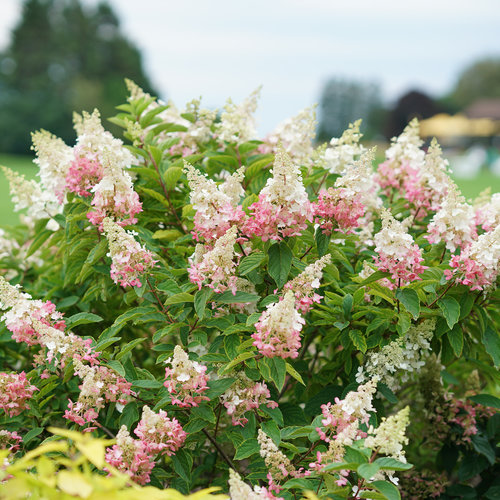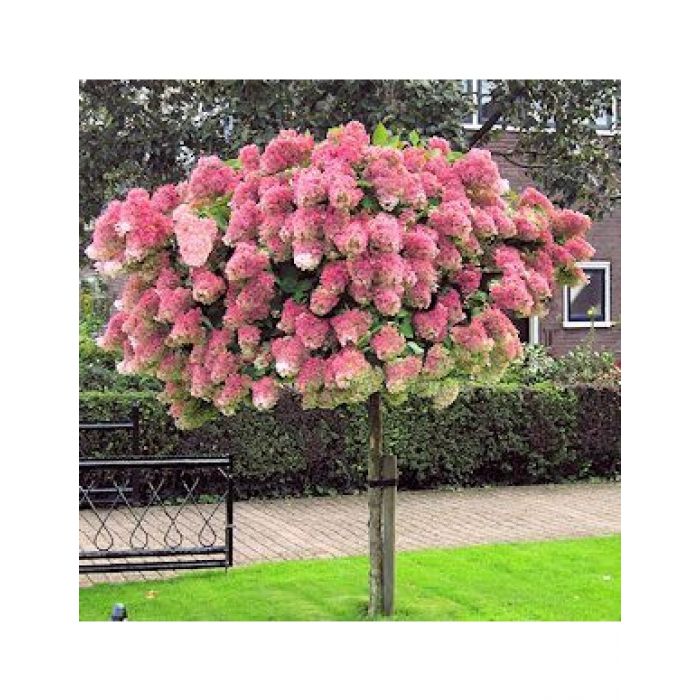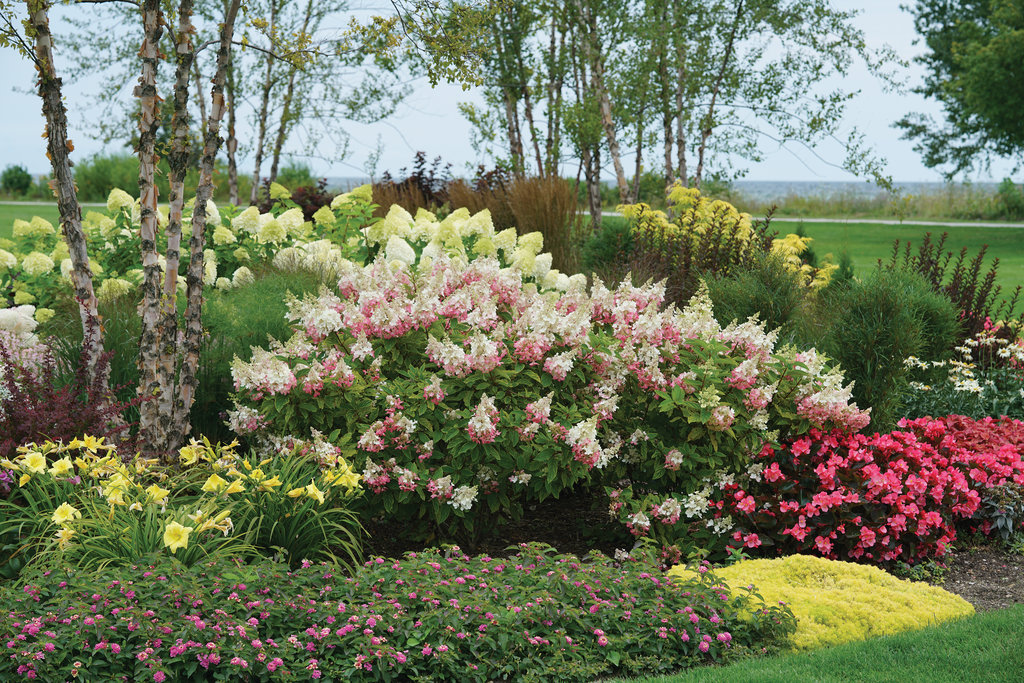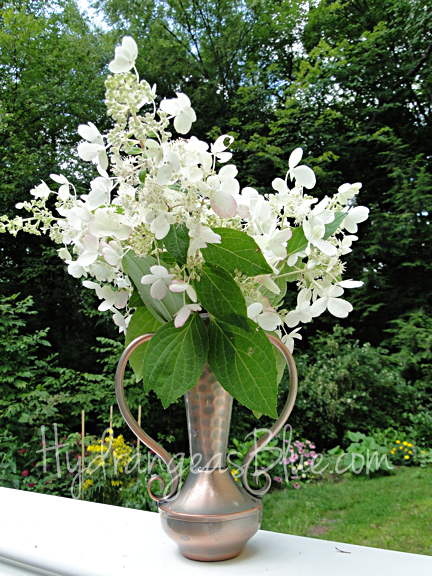Pinky Winky Hydrangea: The Easycare Shrub With Stunning Flowers
Pinky Winky Hydrangea: The Easy-Care Shrub with Stunning Flowers
The Pinky Winky Hydrangea is a beautiful and easy-care shrub that is sure to add a touch of elegance to your garden. With its large, conical flowers that change color over time, the Pinky Winky is a showstopper that will bloom from mid-summer to early fall.
Introduction
The Pinky Winky Hydrangea is a panicle hydrangea, which means that it produces large, cone-shaped flowers. The flowers are typically white when they first open, but they gradually turn pink as the season progresses. This two-tone color is one of the things that makes the Pinky Winky so unique.
In addition to its beautiful flowers, the Pinky Winky is also a very easy-care shrub. It can tolerate a wide range of conditions, including sun, shade, and different soil types. This makes it a great choice for gardeners of all levels of experience.
Main Content
Planting and Care
The Pinky Winky Hydrangea is a relatively easy plant to grow. It prefers full sun to partial shade, but it can also tolerate some shade. The soil should be moist but well-drained.
When planting a Pinky Winky Hydrangea, it is important to dig a hole that is twice the width of the root ball. Backfill the hole with soil and water the plant well.
The Pinky Winky does not require a lot of fertilizer. A light application of fertilizer in the spring and summer will help to keep the plant healthy and flowering.
Pruning
The Pinky Winky Hydrangea should be pruned in the late winter or early spring. The goal of pruning is to remove dead or diseased branches and to shape the plant.
You can prune the Pinky Winky to any desired shape, but a good rule of thumb is to remove about one-third of the old growth each year. This will help to keep the plant healthy and encourage new growth.
Companion Planting
The Pinky Winky Hydrangea is a versatile plant that can be paired with a variety of other plants. Some good companion plants for the Pinky Winky include:
- Hostas
- Ferns
- Foxglove
- Coral bells
- Daisies
- Lillies
Attracting Wildlife
The Pinky Winky Hydrangea is a popular plant for attracting wildlife. The flowers attract butterflies, bees, and hummingbirds. The leaves also provide food for caterpillars.
Troubleshooting
The Pinky Winky Hydrangea is a relatively trouble-free plant, but there are a few things to watch out for.
- Leaf scorch: This can occur if the plant is exposed to too much sun. To prevent leaf scorch, plant the Pinky Winky in a location that receives partial shade.
- Powdery mildew: This fungal disease can cause white spots to appear on the leaves. To prevent powdery mildew, water the plant at the base and avoid overhead watering.
- Aphids: These small insects can suck the sap from the leaves, causing them to wilt and yellow. To control aphids, spray the plant with insecticidal soap or neem oil.
Conclusion
The Pinky Winky Hydrangea is a beautiful and easy-care shrub that is sure to add a touch of elegance to your garden. With its large, conical flowers that change color over time, the Pinky Winky is a showstopper that will bloom from mid-summer to early fall.
If you are looking for a versatile and easy-to-grow shrub that will attract wildlife, the Pinky Winky Hydrangea is a great choice.
The pinky winky hydrangea is a beautiful and versatile shrub that can add a touch of elegance to any garden. It is known for its large, showy flowers that bloom in shades of pink, blue, and white. Pinky winky hydrangeas are relatively easy to care for and can grow in a variety of climates.
If you are thinking about adding a pinky winky hydrangea to your garden, I recommend visiting . This website has a wealth of information about pinky winky hydrangeas, including care tips, planting instructions, and varieties. You can also find photos and videos of pinky winky hydrangeas in bloom.
FAQ of pinky winky hydrangea
1. How much sun can Pinky Winky hydrangea take?
Pinky Winky hydrangea can tolerate full sun to part shade. In hot climates, it will generally do best with some shade. The ideal amount of sunlight for Pinky Winky hydrangea is 4-6 hours of direct sunlight per day.
2. What is the best soil for Pinky Winky hydrangea?
Pinky Winky hydrangea prefers moist, well-drained, fertile soil. The soil pH should be neutral to slightly acidic. If the soil is too alkaline, the flowers may turn blue.
3. How do I water Pinky Winky hydrangea?
Keep the soil moist, but not saturated, especially in summer and in the first year after planting. Water deeply and less frequently during the winter months.
4. How do I fertilize Pinky Winky hydrangea?
Fertilize Pinky Winky hydrangea in early spring and again in midsummer with a balanced fertilizer. A fertilizer that is high in phosphorus will help promote flowering.
5. How do I prune Pinky Winky hydrangea?
Prune Pinky Winky hydrangea in late winter or early spring. Remove any dead, diseased, or damaged branches. You can also lightly prune the plant to shape it.
Image of pinky winky hydrangea
- Image 1: A close-up of a pinky winky hydrangea flower, showing its delicate petals and pink-purple color.

- Image 2: A full-size pinky winky hydrangea bush, in full bloom. The flowers are a beautiful shade of pink, and the bush is well-shaped and healthy.

- Image 3: A pinky winky hydrangea in a garden setting. The bush is surrounded by other flowers, and it is the focal point of the garden.

- Image 4: A pinky winky hydrangea in a vase. The flowers are arranged in a simple vase, and they make a beautiful centerpiece for a table.

- Image 5: A pinky winky hydrangea in a pot. The bush is planted in a large pot, and it is perfect for a patio or balcony.

Post a Comment for "Pinky Winky Hydrangea: The Easycare Shrub With Stunning Flowers"